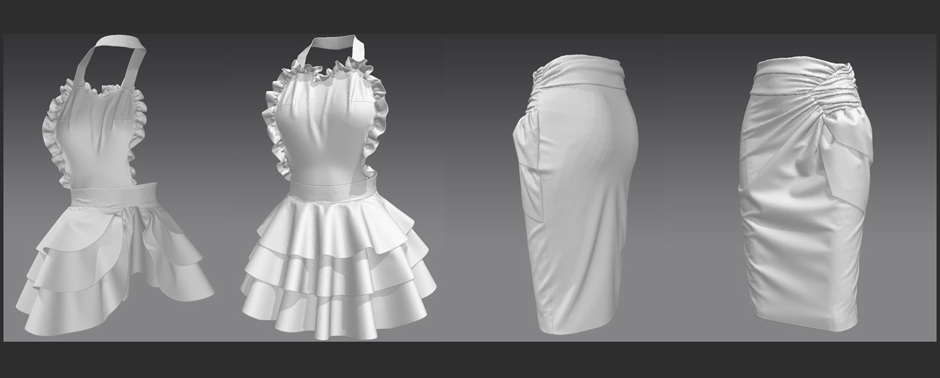Digital technologies in fashion design: expectations VS reality
MATERIALS
Almost all clothing CAD systems have libraries of materials with a different set of indicators of physical and mechanical properties, which traditionally include thickness, extensibility, stiffness, surface density, structure. There is a problem that consists in the lack of unified approaches to the study and virtual design of all elements
textile materials. Foreign developers parameterize the properties of materials for clothing using widespread equipment (such as KES-F or FAST, Fabric Assurance by Simple Testing, which are not available in our country) or according to their own standards (Vidya, Assyst). In many CAD systems, drapery is the main indicator.

By changing individual indicators, you can simulate the behavior of materials on the surface of the avatar. The realism of notwhich simulations is up toly high, but it is limited to simple forms of clothing.
The measurement conditions may be different, and therefore data compatibility is not always possible. Indicators from existing databases do not take into account the presence of thread seams, which always act as stiffeners in clothing and affect the behavior of materials in space.
It is obvious that reducing all the properties of materials only to a group of mechanical indicators is no longer enough: indicators are needed with which you can predict the comfort of future clothing. For example, knowledge of the stretchability group of a knitted fabric is sufficient for designing simple knitted clothing, but does not guarantee obtaining the necessary compression effects. Each newly created material must have a digital passport, on the basis of which it will be possible to model its behavior in different types of clothing
from compression to oversize, as was the case with KES-F. Only universal approaches accepted by all can become the foundation on which it is possible to integrate the knowledge gained by different researchers and practitioners.

CLOTHING
Digital doubles allow you to reproduce many situations that take place during the design, manufacture in the material and subsequent external evaluation of the new figure-clothing system. A digital double of clothing can be obtained after a virtual fitting.
Avatar-clothing systems can be divided into the following types:
- the size of the figure changes under the influence of clothing (for example, compression);
- clothing sizes change under the influence of the figure (for example, sports);
- the size of clothing depends on its design;
- the synergistic influence of all the listed factors should be taken into account;
- the action of the environment leads to changes in the figure and clothing.
The solution to the problem of identifying and eliminating clothing fit defects by correcting drawings is currently at an initial stage. There are several reasons for this. Firstly, only empirical experience, which cannot yet be separated from a professional, is sufficient to identify the causes of poor-quality clothing fit on the figure and ways to eliminate them. Secondly, the uncertainty of the landing quality requirements makes the qualimetry process very difficult for the designer and the consumer. But this is the future highest level of CAD development, requiring the use of neural networks and other artificial intelligence devices.
Summing up, it should be said that the three-dimensional design of clothing in a virtual environment, compared with the 80s, has significantly advanced. In any case, there are already positive examples of using computer programs at different stages.
Photo: expert and from open sources